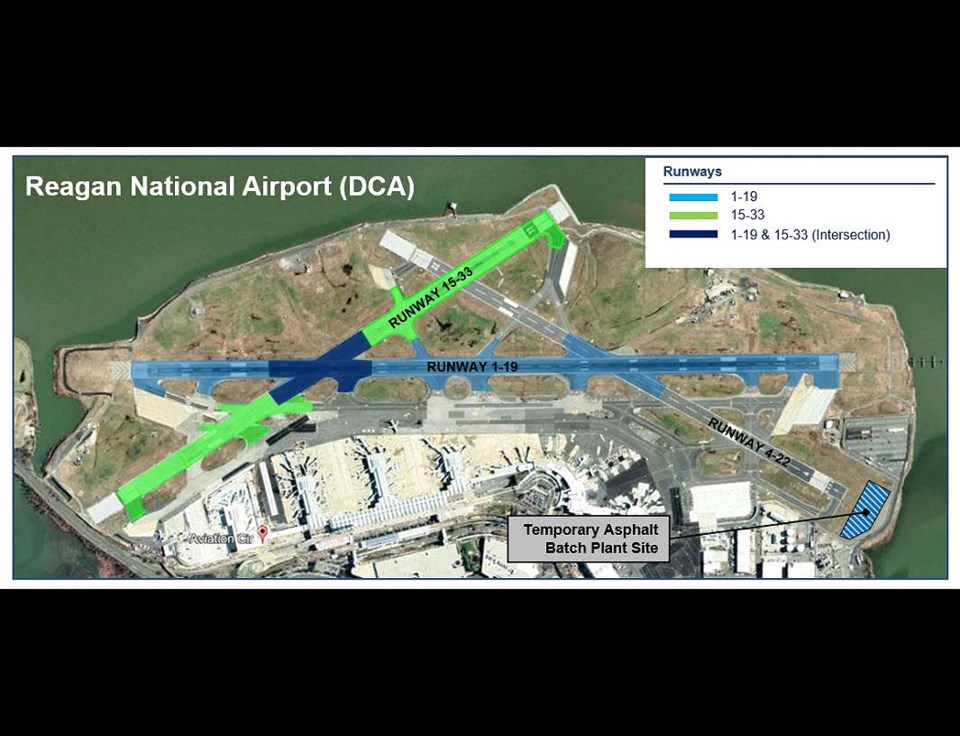It adds up fast: 800 tons today, 800 tons tomorrow, 800 tons the next day, and so on and so forth.
That’s how much asphalt is being laid on a nightly basis as efforts to upgrade pavements on Ronald Reagan Washington National Airport’s major runway roll ahead until cooler weather conditions call a halt through early next spring.
“We’re ahead of schedule,” said Jack Potter, president/CEO of the Metropolitan Washington Airports Authority, noting that 1.5 million tons of asphalt has already been laid as part of a project that began in April and is taking place during the overnight hours.
It is a “nightly race against time” to keep the work moving while having the runways ready for the first arrivals at 6 a.m., Potter said at the authority’s Sept. 20 board meeting.
The project requires placing 8 inches of new asphalt on the airport’s main runway (designated 1-19) and a secondary runway (15-33), as well as the intersection of 1-19 with the airport’s third runway (4-22). When the project recommences in 2024, another 2 inches will be added.
The foundation, however, will remain in place – as it has since the airport opened in 1941. Authority officials say it is in good shape.
Owing to the work, National currently has a nightly curfew on aircraft movements beginning at 11 p.m. Any flights that can’t meet the deadline owing to unanticipated delays either have to be canceled or, in the case of arriving flights, divert to other airports.
Tim Poole, an authority board member representing Maryland, recently spent a night observing milling and paving operations.
“It’s absolutely fascinating to watch this project unfold,” he said. “It’s a well-oiled machine. It will blow your mind.”
Runway 1-19 has been determined to be the nation’s busiest runway in terms of daily operations, something authority officials have used in an attempt to stave off congressional action to increase flights at the mostly slot-controlled airport.



